This is your ultimate guide to cold storage warehouses.
In it, you’ll learn:
What cold storage warehousing is
Who uses cold storage warehousing
How cold storage works
The types of cold storage warehouses (with examples)
How to choose a cold storage warehouse
Tips for working safely in cold storage warehouses
Let’s dive in!
Table of Contents
What Is Cold Storage Warehousing?
Cold storage warehousing involves the storing of perishable or other sensitive goods like food, medicines, and artwork at a specific temperature range to maintain their integrity, shelf-life, and quality.
Who Needs Cold Storage?
Any product or item that can degrade easily or lose its integrity when subjected to temperature fluctuations needs cold storage.

Chilling or freezing these sensitive goods helps slow their physical and chemical changes, which preserves their purity while inhibiting biological decay.
The ultimate goal of cold storage warehousing is to allow the movement of these products to end-users while maintaining the highest quality.
Specific Products That Require Cold Storage
Foods like fresh produce, meat and seafood, dairy, processed foods, and frozen foods
Nutritional supplements like perishable nutrient products
Botanicals such as flowers and plants
Bio-pharmaceuticals like medicines, vaccines, blood samples, IVs, and certain dental materials
Books and artwork like historical documents, paintings, and film canisters
Craft goods like candles (as they can lose their shape or color or melt if kept in high heat)
Cosmetics such as lipstick and cologne
Chemicals like reagents and disinfectants (these require cold storage to slow down their chemical reactions)
Organic textiles including fur, wool, and hides
Specialized products like aircraft components
Specific Industries That Use Cold Storage
Restaurants and food outlets
Supermarkets and food service firms
Importers and exporters
Frozen food producers
Agricultural producers
Pharmaceuticals and healthcare institutions
How Big Is the Cold Storage Industry?
Cold storage is a key player in the industrial real estate sector.
Here are some key facts about its size in the United States:
Cold storage accounted for 3.6 billion cubic feet of all warehouse space in 2017
The market size of cold storage facilities was valued at $30.26 billion in 2021
California, Washington, and Florida are the 3 states with the highest cold storage volume
Why Is Cold Storage Becoming So Popular?
The cold storage market is expected to expand at a compound growth rate (CAGR) rate of 9.2% between 2022 and 2030.
But what’s causing the increase in popularity?
Here are 3 key factors:
1. Changing Consumer Preferences
Many consumers’ eating habits are changing.
For instance, more folks are avoiding processed, canned, and packaged foods and instead consuming freshly prepared kitted meals.

More consumers are buying kitted meals, driving up demand for cold storage
These pre-prepared meals require careful temperature control for preservation – hence the need for more cold storage.
2. Population Growth
By 2026, projections show that 20 million more people will live in the U.S.
And more people means more mouths to feed, more medicine to supply, and more goods demanded.
Thus, there’s more need for cold storage facilities to accommodate these demands.
3. Increased Spending
There’s been a general increase in consumer spending due in part to the rise of E-commerce.

This includes spending on refrigerated products like food, pharmaceuticals, and cosmetics.
Of course, the more of these items that are sold, the greater the need for cold storage.
The Role of Cold Storage in the Supply Chain
Cold storage warehouses play an important role in the supply chain for perishable goods.
They keep products that need specific temperatures in good condition from the time they’re made until they reach the customer.
Some areas you must consider when using cold storage in your supply chain include:
Inventory Management: It’s crucial to track and manage inventory well to keep products fresh and ensure they get where they need to go on time. This includes checking expiration dates and rotating stock to avoid waste.
Transportation and Logistics: Moving goods to and from cold storage requires special refrigerated trucks (called reefers) and careful planning. If there are delays or mistakes, products can spoil, leading to big losses.
Supplier and Retailer Coordination: Cold storage facilities need to work closely with suppliers and retailers to plan delivery schedules, predict demand, and manage storage needs. This helps avoid having too much or too little stock and ensures products are available when needed.
Regulatory Compliance: Cold storage warehouses must follow strict rules for food safety and handling, especially for food and medicine. Following these rules is important to keep the supply chain running smoothly and avoid legal problems.
How Do Cold Storage Warehouses Work?
Cold storage warehouses maintain cooler temperatures through a combination of insulation and HVAC cooling systems.
Insulation serves the same purpose for cold storage warehouses as it does for houses: It helps limit the transfer of heat between the inside and the outside.
On the other hand, cooling systems for cold storage warehouses are a bit more complex.
But the basic idea is that they use a combination of coolant, pipes, radiators, and fans to absorb and remove heat and replace it with cooler air.
You can watch the following video or the sections below to read more about how a basic cold storage warehouse cooling system works:
The Main Cold Storage Cooling System Components
The Coolant
If you think of a cold storage warehouse cooling system as a mechanical human body, the coolant (also called a “refrigerant”) is like the blood.
That’s because it’s made of liquid (typically anhydrous ammonia) and circulates throughout the system via a series of tubes, pipes, and components – much like blood does through veins, arteries, and organs.
The Compressor
This is the main component of a cold room cooling system.
If the coolant is the “blood,” the compressor is similar to the “heart” in that it helps move the coolant.
It does so by raising the coolant pressure and temperature through compression and then pumps the heated refrigerant into the condenser.
The Condenser
The condenser removes heat from the refrigerant and disperses it into the atmosphere using tubes, fans, and/or water spray.
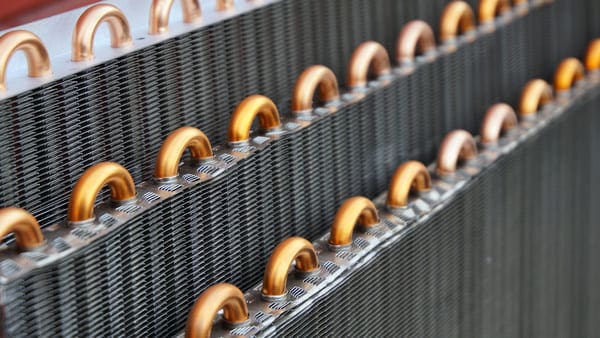
In the process, the refrigerant changes state from a gas to a liquid and then flows into the receiver.
The Receiver
The receiver stores the high-pressure liquid coolant condensate it gets from the condenser.
Through this, the receiver allows the whole system to maintain pressure while also providing a buffer for handling increased loads, such as when more cool air is needed.
When needed, the receiver releases the refrigerant into an expansion valve.
The expansion valve helps regulate the pressure, temperature, and amount of refrigerant released into the next component – the separator.
The Separator
The separator receives and accumulates refrigerant from the receiver.
Pumps outside the separator pull the refrigerant into another expansion valve, where the flow rate is adjusted before it enters the evaporator.

The pumps also help adjust the load placed on the evaporator, which is determined by the cooling needs in the warehouse.
The Evaporator
The evaporator is what brings cold air into the space being cooled and causes the temperature to drop.
It does this by passing the cold refrigerant through a series of tubes while a fan blows air from the space across the tubes.

The cold refrigerant in the tubes absorbs the heat, and the air leaves the evaporator cold – thus chilling the room and the goods.
Once the coolant does its cooling job in the evaporator, the refrigerant makes its way back to the first component (the compressor) and the whole cooling process starts over again.
How Cold Is a Chilled Warehouse?
Cold storage warehouse temperatures are broad but normally range from -30° to 70° F.
Warehouses that handle frozen goods can be as cold as -122.8° F (for ultra-low temperature pharmaceutical warehouses).
But the most common freezer temperature range is between -10 and -20° F.
What Is the Difference Between Cold Storage, Climate-Controlled, and Temperature-Controlled Warehouses?
Cold storage is a type of temperature-controlled warehouse that restricts temperatures to a certain specific range but does not control humidity
Climate-controlled warehouses restrict both temperature and humidity levels to certain specific ranges
How Many Types of Cold Storage Are There?
There are 2 main types of cold storage:
- Refrigerated cold storage
- Frozen cold storage
Here’s a summary of each one’s characteristics:
Refrigerated cold storage facilities (sometimes called “refrigerated warehouses“) are designed to preserve the integrity and shelf life of products that don’t need to be frozen.

They are typically kept between 33° and 55° F and store products such as fruits and vegetables.
On the other hand, frozen cold storage facilities help preserve the integrity and safety of items that must be frozen.

Temperatures in these freezer storage facilities can be up to 32° F, making them ideal for storing products like meat, fish, and produce.
5 Cold Storage Warehouse Examples
Although there are 2 main types of cold storage warehouses, there’s still a lot of variation among them.
So let’s go over a few common cold storage warehouse examples.
1. Private Cold Storage
The defining characteristic of private cold storage warehouses is that they’re owned by the same enterprise that uses or produces the goods stored in the facility.

In practice, they’re commonly found connected to the main manufacturing facility and receive the just-made via conveyor.
Once inside the cold storage facility, the products are held until they’re ready to be sent to retailers or directly to the end-users.
Of all types of cold storage warehouses, private ones are less common.
This is largely because of the expensive nature of building and running them, which involves complex design and engineering plus compliance with many regulations.
As a result, they’re reserved for large companies like Nestle and Kraft.
While more expensive, the main benefit of owning a private cold storage warehouse is the greater control and flexibility it provides over products and how they’re handled.
This can help producers maintain quality, find areas to reduce costs, and ultimately improve customer satisfaction by ensuring a superior product.
2. Public Cold Storage
Public cold storage is a type of cold storage warehouse that’s usually owned and operated by 3rd-party logistics (3PL) companies.
Unlike private cold storage warehouses, public ones receive store, and ship goods on behalf of client companies.
For example, a fresh flower distributor might pay a 3PL cold storage facility to receive their products, hold them in storage until orders are received, and then load them onto delivery trucks.

In addition to basic warehousing storage, many public cold storage facilities also offer a variety of value-added services.
This can include things like assembling or kitting, placing inserts in packages, or providing expanded quality control.
Public cold storage is the most common type of cold storage warehouse in the United States.
The reason for its popularity is that owning and running a cold storage facility is a massive, expensive, and complex undertaking.
Furthermore, handling logistics isn’t every company’s strong suit.
Thus, those who recognize this also realize the value of partnering with a logistics specialist whose strong suit it is.
That way, each company can focus on other, more pressing concerns like product development, marketing, and sales.
3. Refrigerated Containers
A refrigerated container is the most basic and inexpensive cold storage option for storing small quantities of temperature-sensitive products.
They are essentially shipping containers equipped with diesel-electric or grid-electric cooling units that can maintain temperatures between -30° and 70° F.
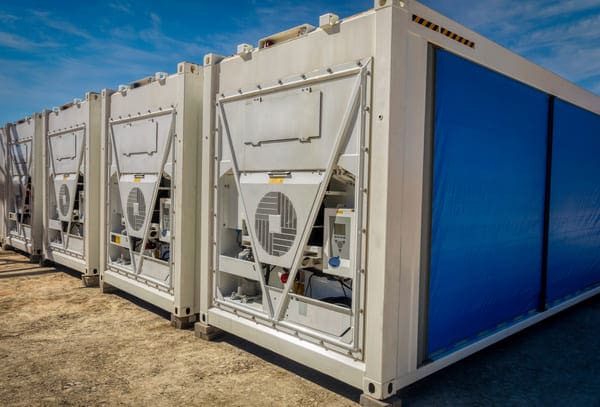
Refrigerated containers are the simplest, most flexible type of cold storage
Also, highly customizable, refrigerated containers can be outfitted with features like different floor types, indoor lighting, and remote temperature monitoring.
Furthermore, because of their relatively small size (most are between 10 and 40 feet long), they are highly mobile.
For example, they can be placed inside a warehouse, outside, or at dock level, as well as on a trailer chassis – whatever setup is needed to accommodate the user’s specific needs.
4. Blast Freezers
Also called “blast chillers,” “shock freezers,” or “flash freezers,” these are very cold freezers used to rapidly chill products before placing them in longer-term storage.
Blast freezers are often used at the intermediate stage between production and storage.
For example, they’re useful when warm goods like bakery items straight from a production line oven need to be chilled quickly before moving to a longer-term cold storage facility.
How does it work?
Blower fans are used to force chilled air over products, which can result in bringing the temperature down from 160° to 41° F in about 90 minutes.
This helps preserve the attributes like nutrients, texture, flavor, and shelf life while also reducing bacterial growth.
Moreover, it helps reduce the strain on conventional cold storage cooling systems, which are less efficient when trying to lower the temperature of very warm goods.
5. Ultra-Low Temperature Cold Storage
Ultra-low temperature (ULT) cold storage is designed for storing sensitive biological and research specimens at temperatures ranging from -4° to -122.8° F.

ULTs gained exposure during the COVID-19 pandemic as it became known that they were required for safely storing the vaccines.
Besides vaccines, they are used for storing items like medicines and blood and tissue samples.
Compared to other types of cold storage on this list, ultra-low temperature cold storage accounts for a much smaller portion of the entire cold storage industry.
Furthermore, ULTs tend to be smaller physically than conventional cold storage – usually 20,000 to 60,000 square feet versus 150,000 to 400,000 square feet for the latter.
They also function with the utmost precision to preserve highly sensitive materials.
That includes using liquid nitrogen or carbon dioxide backup cooling systems if the primary cooling system fails.
In addition, many ULT facilities are equipped with robust monitoring systems like alarms, data logging, and remote temperature control to safeguard against system failures.
How to Choose a Cold Storage Warehouse
There are over 600 cold storage warehouses in the United States to choose from.
This makes it challenging to decide which is best for you.
So, let’s discuss the biggest factors in choosing a cold storage warehouse.
What Is the Distance from Your Production and Customer Bases?
Location is critical when choosing a cold storage facility.
That means you should consider the warehouse’s proximity to both your production areas and your end-user base.

Ideally, the best cold storage facility is close to the production site and within reach of the drop-off or distribution points.
This creates fewer and shorter temperature deviations and helps reduce fuel consumption and carbon footprints.
Does It Have Easy Access to Roads, Railways, and Airports?
In other words, how close is the warehouse to the modes of transportation you use to move your products?

Most cold goods are moved on refrigerated tractor-trailers (reefer trailers), which means the warehouse should be close to major highways.
But if you move your goods via rail lines or air, the warehouse should be close to those transportation facilities.
Preferably, there will be a short distance between the two to reduce delays, fuel consumption, and other associated costs.
What Is the Storage Capacity?
Many cold goods have strict schedules and cannot sustain any form of delay in storage or transportation.
So you’ll want to ensure your chosen cold storage facility can handle incoming goods.
That ultimately means they can cope despite upticks in consumer demand, seasonal production, and holiday crunches.
Do They Have Reliable Energy Sources?
Cold storage facilities primarily depend on electricity because it’s easily accessible, clean, fairly economical, and environmentally friendly.
But electricity can be unreliable.

In the case of a power outage, this can translate to major financial losses – particularly for cold storage facilities where products are liable to spoil.
So before you settle on a facility, ask what kind of temperature control systems they have in place.
Also, see if they have backup power systems in place in case the electrical grid goes down.
What Are Their Monitoring Abilities?
Consider how the facility provider monitors the goods and their supporting technology.
This is very important considering the kind of high investment that goes into cold goods.
Some critical questions to ask are:
How do they monitor the temperatures of their goods?
Is the monitoring in real-time?
How are they alerted to problems?
What kind of security and surveillance capabilities do they have?
Is there remote monitoring?
Is there on-site 24/7 security tech and personnel?
How Robust Are Their Inventory Control Systems?
Big cold storage facilities that handle large inventories should have robust inventory control systems in place to keep track of everything.

To ensure that’s the case with any facility you’re interested in working with, ask questions like:
How sophisticated is their inventory management software?
How much visibility does it provide?
Do they use automated systems to keep accurate inventory counts?
Can they integrate with your inventory software systems?
For example, do you need to integrate your enterprise resource planning software (ERP) with their warehouse management software (WMS)?
This can allow expanded visibility into the movements of products and prevent cross-contamination between products.
That way, both you and the warehouse operator know where each product is and can dedicate the resources when and where they’re needed to further process the products.
What Is Their Track Record and Reputation?
Two important things to consider about any warehouse – cold storage or otherwise – are their shipment and turnaround times.
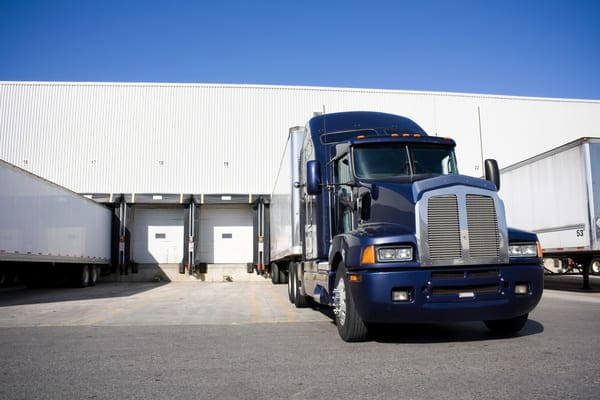
For instance, how often do the facility’s shipments arrive on time?
The closer to 100%, the better because making shipments on time is critical for any cold storage facility.
You should also find out how quickly they load and unload trucks or rail cars and how often drivers are held up waiting to be unloaded or loaded.
After all, efficient cold storage facilities have minimal turnaround times for trucks or rail cars both arriving and leaving the facility.
What Are Their Credentials?
When choosing a facility, part of due diligence is knowing the brand and its credibility.
And that includes the warehouse’s compliance with industry standards and government regulations.
You can do that by asking questions like:
How long have they been in operation?
Do they have an established track record with customer success stories?
Do they have food safety certifications from credible associations, such as Hazard Analysis Critical Control Point (HACCP) or the Food Safety Modernization Act (FSMA)?
What are their Food Safety Audit (FSA) scores? If storing pharmaceuticals, do they follow General Manufacturing Processes (GMP)?
Are they members of professional associations, like the American Frozen Food Institute (AFFI) or the National Association of State Department of Agriculture (NASDA)?
These credentials show that they’ve met industry standards and government regulations for the safe and effective handling of sensitive goods.
Do They Offer Any Value-Added Services?
Many businesses are opting for turnkey warehousing solutions so they don’t have to bother with the hassle of actually handling and distributing their products.
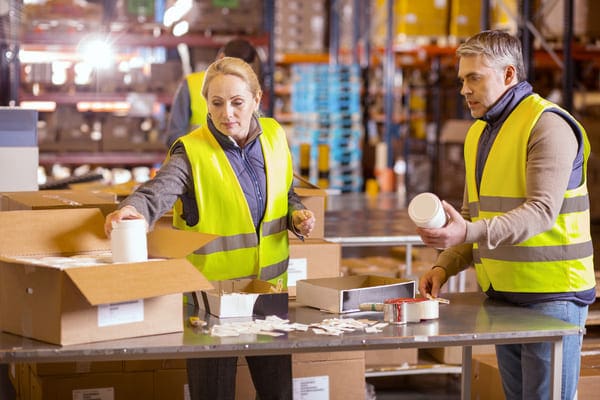
If your business is one of them, you’ll want to consider what services a cold storage warehouse offers before you agree to contract with them.
For instance, do you need palletizing, kitting, labeling, shrinking, or wrapping and does the facility offer them?
And if so, what are the costs?
How Much Is a Cold Storage Warehouse?
The Costs of Building and Retrofitting a Cold Storage Warehouse
The cost per square foot for cold storage construction runs between $250 to $350.
This is about 3 times the cost ($80 to $100) of a conventional warehouse.
Thus, it’s not unusual for cold storage warehouses to cost tens of millions of dollars to build.

Why does it cost so much?
The cost hinges on several factors, including the building’s design and construction, internal equipment, software, labor costs, and maintenance.
For example, something as simple as high-speed, auto-closing doors (used to control air transfer between cold and ambient areas) can cost up to $25,000 apiece.
Moreover, converting a conventional ambient warehouse into a cold storage warehouse is often as costly as building a brand-new cold storage facility.
This is why so many companies opt to outsource their cold storage needs to public (3PL) warehouses.
The Cost of Storing Goods in a Cold Storage Warehouse
When it comes to the cost of actually storing goods, public cold storage warehouses or 3PLs often charge fixed or variable prices by the pallet.
While warehouse storage costs can vary widely, an example rate structure may be:
$20 to receive and ship a single pallet
$10 per month to store a single pallet
$1 to $10+ for value-added services, such as picking, shrink wrapping, or labeling
What Are the Challenges of Working in Cold Storage?
Working in a cold storage warehouse brings with it some difficulties that may not exist in conventional warehouses.
Let’s discuss some of the key ones.
Different Handling Requirements for a Large Variety of Goods
Depending on the products being stored, there may be many regulations that the warehouse must handle to ensure product safety and integrity.

This makes running a cold storage warehouse much more complicated than ordinary warehouses that handle less sensitive items.
Public cold storage warehouses especially have more problems since they often handle various items with different requirements.
For example, the same facility may handle everything from produce and ice cream to flowers and cosmetics.
Making the Best Use of Storage Space
Maximizing storage density is as much a problem for cold storage warehouses as it is for conventional warehouses.
The question is: How can you store as many products as possible in your existing space?

One method is to expand the warehouse horizontally (i.e., increasing the square footage).
But this is often prohibitively expensive.
A more economical option is to expand vertically, allowing more goods to be stored in the same footprint.
Still, making the best use of space among different SKUs and turnover can be a difficult task for many cold storage warehouses.
Operational Disruptions
Any delays or disruptions to operations can be catastrophic for items that require cold storage since it can result in massive product losses.

These operational disruptions can include:
A forklift truck breaking down
A missed shipment
Delays in loading or unloading semi-trailers or rail cars
Manufacturing equipment malfunctions
Refrigeration equipment breaking down
This makes it necessary to have contingency plans in place.
For example, a warehouse may keep spare forklift parts on hand so they can be rapidly deployed to fix a lift truck if it breaks down.
Other ways to guard against operational disruptions include keeping up on planned maintenance or implementing a preventative maintenance plan for equipment.
It can even include establishing and maintaining good relationships with logistics companies to quickly overcome any transportation delays or disruptions.
High Labor Costs
Every warehouse operator (or business with employees for that matter) knows that labor is expensive.
It can account for up to 70% of the total costs of warehouse operations.
And the ongoing labor shortage only makes things more difficult and expensive.

Plus, high turnover rates mean that warehouses are also spending money on training costs that they never gain back if a worker quits shortly after training.
On top of that, finding and retaining employees willing to work in cold temperatures for long periods makes labor even more expensive and difficult to source.
High Utility Costs
Cold storage warehouses have higher energy costs than ambient storage.
The average refrigerated warehouse uses 24.9 kilowatt-hours (kWh) per square foot each year, which is 4 times higher than conventional warehouses consume.

One reason for the higher energy costs is that many cold storage warehouses are more than 20 years old and built with less energy-efficient materials than modern facilities.
Another reason is because of the equipment involved, such as the cooling system, automatic doors, monitoring systems, and fire safety systems.
Each of these can draw lots of power, resulting in higher utility bills.
One more reason is the challenge of maintaining consistent temperatures.
This occurs especially when there’s lots of movement in and out of the warehouse – such as at the entry/exit points – and results in high energy consumption.
Moreover, cold storage warehouses consume lots of water – in some cases, 60,000 to 100,000 gallons per day.
And given that this water may also need to be treated and sanitized, this all adds to the operational costs of a cold storage warehouse.
Hard on People
Some people wonder, “What happens if you work in a freezer?”

The human responds to cold in 2 ways:
- It redirects blood flow from the extremities (hands and feet) to the core to warm the organs
- It attempts to keep itself warm by increasing the heart rate through shivering
These body responses can cause a person to experience difficulties and complications, including:
General discomfort
Loss of concentration
Fatigue due to energy losses from the body attempting to warm itself
A loss in dexterity and difficulty manipulating objects
Hypothermia, if the body’s temperature drops below 95° F
Frostbite, which is the freezing of the skin or underlying tissues
Trench foot, which is damage to foot tissues caused by immersion in cold water
Moreover, these issues increase when a person is improperly dressed, wet, exhausted, or has pre-existing health conditions, and poor physical conditioning.
Other risks associated with working in cold storage include:
Slips, trips, and falls from the accumulation of frozen fluids caused by condensation
Impact injuries from equipment losing traction on slick surfaces
Poisoning from exposure to fumes from equipment fuel or the ammonia used in refrigerants
Hard on Equipment
Using equipment in cold storage that isn’t properly guarded against the conditions can cause premature wear and failure.
For example, Toyota lift trucks can handle temperatures as low as 32° F without any modification.

But temperatures below that can result in problems.
Specifically, the transition from cold to ambient temperatures can cause condensation on the sensitive electronic components and wiring.
This can lead to rust, which can be extremely expensive to repair.
Also, batteries – whether for lift trucks or handheld scanning equipment – don’t usually perform well in the cold.
They tend to suffer from frozen electrolytes, lost capacity, and higher energy requirements for charging.

For example, every 15° to 20° F drop in temperature below 80° F can result in a battery losing 10% of its capacity.
This means an electric forklift operating in a -20° F warehouse can lose half of its battery capacity, resulting in much shorter run times and impaired productivity.
5 Tips for Working Safely in Cold Storage
A lot comes with working safely in a cold storage facility.
Here are some of the key tips for doing so.
1. Follow OSHA’s Guidelines
OSHA is a great place to seek guidance on workplace safety issues because they’re the workplace safety watchdog.
Although OSHA doesn’t provide specific rules for working in the cold, they do nevertheless suggest several ways to protect workers in these environments, including:
Train workers to recognize the signs of cold stress and provide first aid
Provide engineering controls such as heaters that workers can use to warm up
Provide breaks and refreshments like warm beverages
Encourage proper dress, such as gloves, insulated and waterproof boots, a hat and hood, and knit masks to cover the face and mouth
Incrementally acclimate new or returning workers to the cold to increase their cold tolerance gradually
2. Wear Proper Clothing
Wearing proper clothing for cold conditions should involve dressing in layers and ensuring the face, head, hands, and feet are adequately protected.
Layering Best Practices
Your clothing should be at least 3 layers thick and composed of loose-fitting articles that provide an air barrier, wick body moisture, and prevent excessive sweating.
Specifically, cold-weather clothing should be layered as follows:
- The innermost layer should be made of wool, silk, or another synthetic material suited for wicking moisture away from the body
- The middle layer should be wool or synthetic to provide insulation when wet
- The outer layer should be a breathable material that resists airflow while preventing overheating
Proper Footwear
Wear boots that are designed for cold weather and allow the feet to breathe.
The boots should be waterproof or resistant and have an anti-slip sole.
Wear socks that are non-moisture-absorbing (that means no cotton), like polypropylene.
Also, they shouldn’t be too tight-fitting to reduce foot circulation.
Proper Hats and Gloves
Wear headwear and/or face masks like knitted hats or balaclavas to prevent heat loss from the head.
Gloves should be thermal while also enabling enough dexterity for using equipment like hand scanners and forklift controls.
You can also add hand warmers for a little heat-boosting action.
3. Implement Automated Solutions
The more that automated equipment can take on tasks that require being in the cold, the less human workers need to.
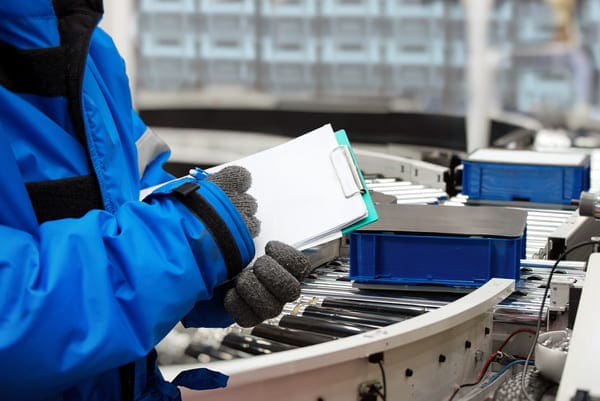
And that helps reduce the risk of injury and illness that comes with the cold, while also boosting productivity (since machines can work faster than humans).
For example, automatic guided vehicles (AGVs) can autonomously transport or pick/place items in a cold storage facility.
Other automated technology solutions, such as RFID scanners, voice picking, and AS/RS systems, can also help reduce employee exposure while improving productivity.
4. Take Frequent Breaks
A 10-minute break every hour is one rule of thumb to give the body resting time.
Workers can use this time to stay hydrated and fortified with nutritious foods to offset the body’s extra work to maintain itself in cold temperatures.
For example, drinking warm, sweetened fluids can help employees cope with the cold.
5. Use Cold Storage-Rated Equipment
Cold storage-rated equipment has specially-guarded components that protect the electrical system from damage due to condensation.
For instance, cold storage forklifts have key features such as stainless steel, fully-sealed components, cold weather oil, anti-slip platforms, and heated batteries.

You can also equip forklifts with enclosed cabs and heaters to protect workers in cold conditions.
Other cold storage equipment tips include:
Use equipment with oversized buttons that allow manipulation by gloved hands
Use larger batteries or assign multiple batteries to a piece of equipment to help offset cold-related performance issues
Switch to lithium-ion (Li-ion) batteries for better cold performance, less maintenance, and faster charging
Conclusion
That’s it: Your complete guide to cold storage warehouses.